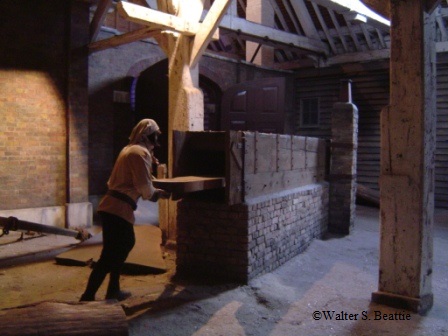Combustible dust assessments are performed to assist management in identifying and defining hazardous conditions and risks so they may be eliminated or controlled. The analysis should examine the process, systems, subsystems, components, actions (or lack of actions), and their interrelationships.
The assessment and review of what can go wrong may not be an easy task. Many dust losses are not the result of a single cause. Rather, it is the confluence of multiple events which occur simultaneously or in a chain of events. Systems should be designed using methods considered to create a “safe” situation. The reliability of the components and assemblies must also be considered. When components or assemblies fail the initial design parameters are compromised. The compromised system is outside of the normal scope of design, and a loss is much more likely to occur.
A dust hazard analysis may be used wherever a dust condition exists. It may be a process which involves drying a liquid sprayed into a drying chamber. It may involve grinding, sifting, screening, or other manipulation of a product. The dust may be released from the process of pouring ingredients from a bag into a vessel. It may be dust within a conveying system. The dust may be tramp dust emissions, or escape material from process leakage points in a manufacturing situation. Dust may also be present from inadequate housekeeping. Dust hazards may exist where large pieces of material are handled, but in the manufacturing process, dusts are created in small amounts and allowed to accumulate over time.
A Look Back in Time
In the grand scheme of the Industrial Revolution, systemized educational curriculums for safety and hazard analysis are relatively recent. Only a few decades ago, finding a college curriculum majoring in safety, fire protection, or process hazard safety were limited. Fortunately, today, such programs are more available and have sprung up at several colleges and universities around the country. Even in universities without dedicated safety programs, safety courses are offered, and even required, in many engineering curriculums. Safety is a topic of discussion in all aspects of engineering.
Early systematic processes were identified in aviation and military applications. Equipment or system failure at 20,000 ft. is not always a survivable event. Moving into the space age, NASA learned through failures that a systematic process must be followed to identify points of failure in each system installed and implemented into the space vehicles launched into outer space.
In the 1960’s, the process and chemical industries embraced Process Hazard Analysis. Calling it HAZOP, for Hazard and Operability Method, it became better identified and published in the 1970’s. Its introduction into process safety regulations in the 1980’s and 1990’s caused a dramatic increase in the implementation of the process. Industries performing high hazard operations have incorporated process hazard analysis into their design and analysis procedures.
Sometimes, product liability drives the need for safety analysis. Today, auto makers perform hazard analysis for each vehicle they make, but this was not always so. Prior to the 1970’s, safety hazard analysis studies were not routinely performed on new car designs. One prominent example was the Ford Pinto. Its gas tank had a tendency to explode into flames upon rear impact. According to some accounts, Ford Motor Company performed cost benefit analysis and identified that the cost to make changes to the vehicle would be greater than the cost of anticipated legal claims. The legal battles over occupant deaths and injuries of the Ford Pinto changed the auto industry’s attitude toward safety analysis on their auto designs. Today, auto makers routinely analyze their vehicles for failure in an attempt to identify weaknesses. The industry has changed over the last 40 years and vehicle safety is a major selling point.
Today, the practice of performing hazard analysis is spreading across general industry. Hazard analysis and safety assessments are provided for many reasons. Companies are concerned with product liability, safety of a hazardous process, property conservation, business continuity, and worker safety. While many corporations have concerned management, there are some who will be dragged into the process through losses, government fines, and litigation.
Preventing Dust Explosions
Unfortunately, there is no easy answer to preventing explosions. NFPA 654, Standard for the Prevention of Fire and Dust Explosions from the Manufacturing, Processing, and Handling of Combustible Particulate Solids discusses many aspects of preventing dust explosions. One of the primary items is designing the processes and facilities that handle combustible particulate solids appropriately. The design must take into account the physical and chemical properties that establish the hazardous characteristics of the materials. The building and processes should undergo a thorough hazard analysis study. The study should look at equipment design, process procedures, worker training, inerting and other protection means. The process system should be designed to limit fugitive dust emissions to a minimum. Any changes, additions, or modifications to the system or process should be reviewed in a management of change evaluation. The major objectives in the review should be life and property conservation. The structural integrity and damage limiting construction is an important aspect. Mitigation for the spread of fire and explosion should be designed into the system. The design should adhere to existing codes, and be of sound, proven technology and technique. NFPA 654 provides a number of sound methods for the design of dust related occupancies, and references several other NFPA codes and standards for specific concerns.
Additional Information – ASSE Safety 2013 Proceedings / Presentation June 25, 2013
For additional information, CLICK HERE see the Proceedings Paper submitted to ASSE for Safety 2013!




 Posted by Walt Beattie
Posted by Walt Beattie